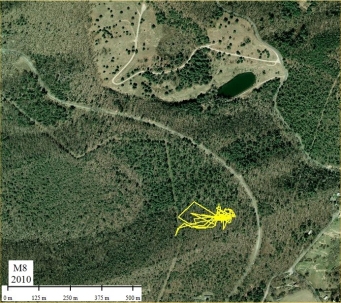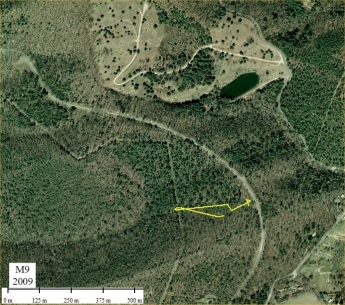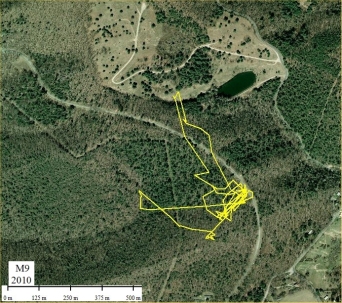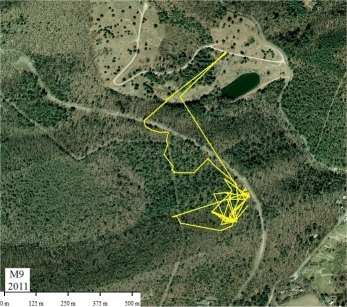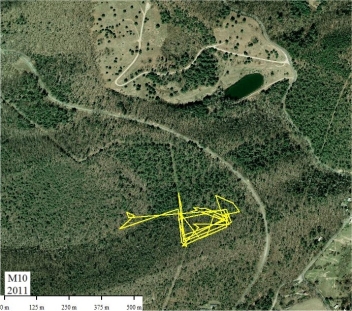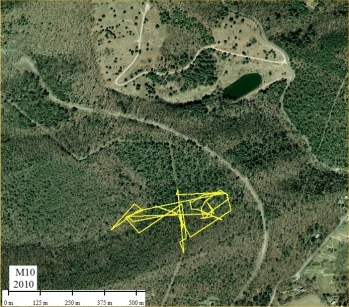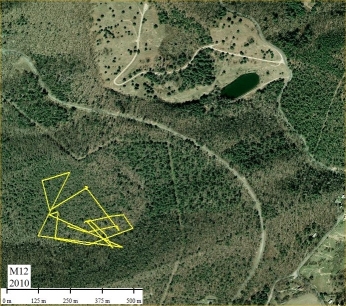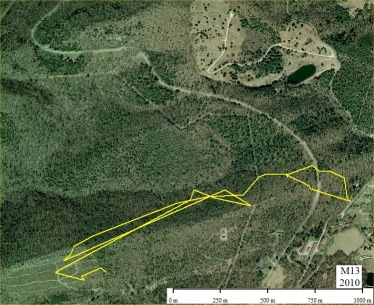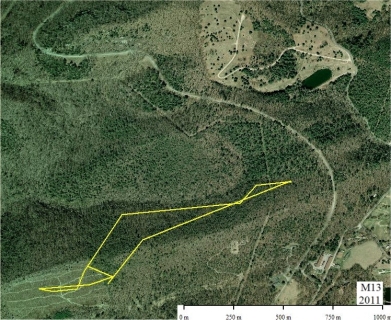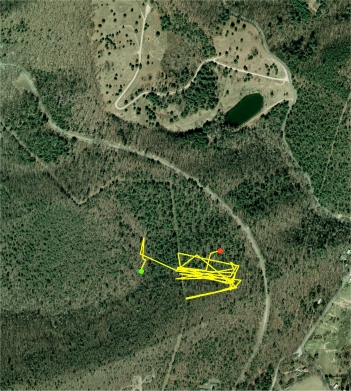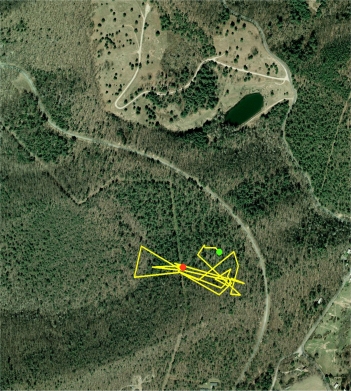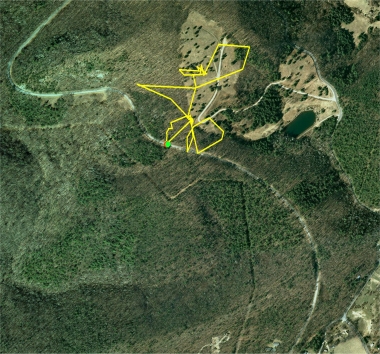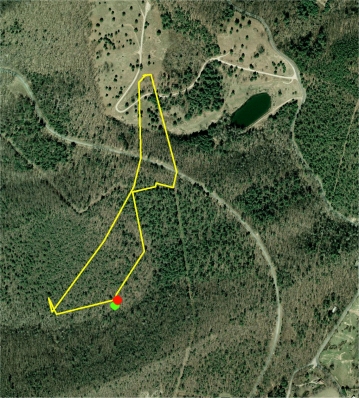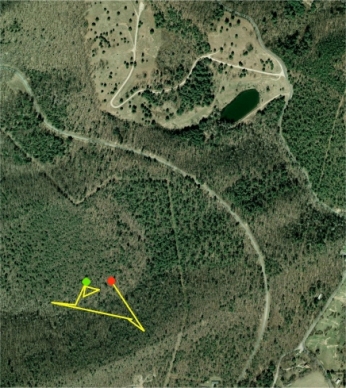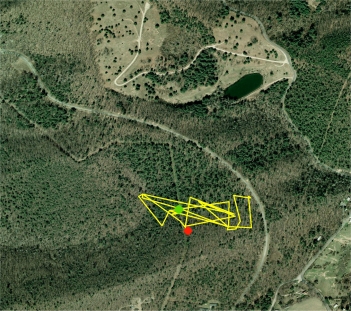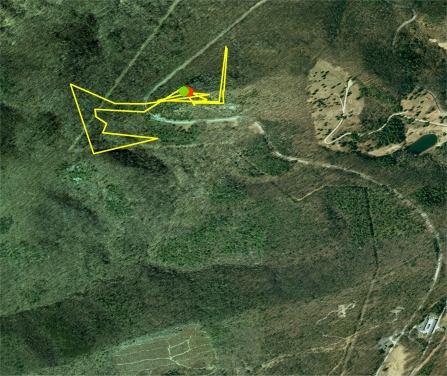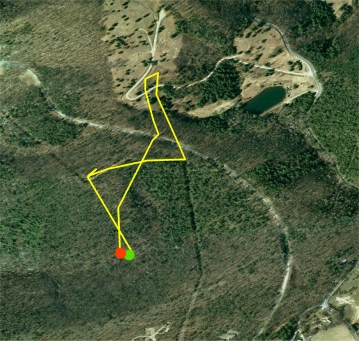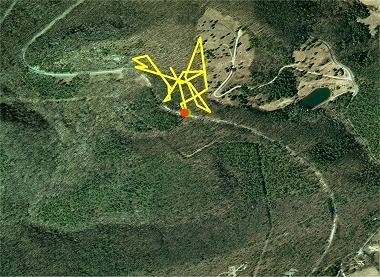0.4 miles in 2009, 7 points
1.6 miles in 2011, 26 points
1.6 miles in 2012, 52 points
0.7 mles in 2013, 22 points
1.6 miles in 2014, 43 points
1.0 miles in 2015, 32 points
0.8 miles in 2016, 23 points
1.8 miles in 2017, 38 points
1.8 miles in 2018, 33 points
1.2 miles in 2019, 19 points
1.4 miles in 2020, 30 points
1.1 miles in 2021, 20 points
1.0 miles in 2022, 20 points
0.1 miles in 2023, 5 points
Like adult turtles M1, M4 and others, M6 has an entirely smooth carapace.
In 2013, M6 stayed on and near the south facing slope nearly the entire season, crossing the creek onto the north facing slope, as she does annually, before crossing back. M6 was not observed nesting in the 2013 season.
In 2014, M6's long travels eventually brought her back to her 2 previous years hibernation location, but she also appeared to be ill as she went into hibernation. She was taken to the Wildlife Center of Virginia for treatment, where she spent the winter and recovered. She was re-introduced in the spring at her hibernation site, and spent the 2015 summer season exhibiting normal behavior.
M6 regularly crosses the road to nest which puts her survival at risk.



